Archive for the ‘Butterflies’ Category
1. Grape soda lupines—my favorite San Diego wildflower
2. Washi makes to-do lists more fun
3, 4. The milkweed is doing its glorious thing
5. Rilla’s shamrock garland
6. The wonderful Jane LaFazio doing a watercolor demo during her class
7, 8. Then it was my turn to try
9. I’m so in love with color


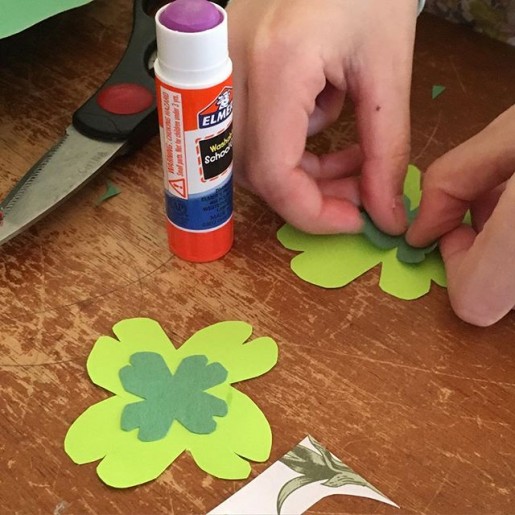
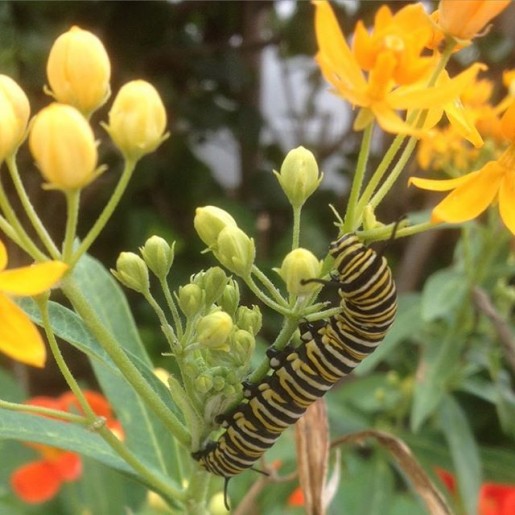





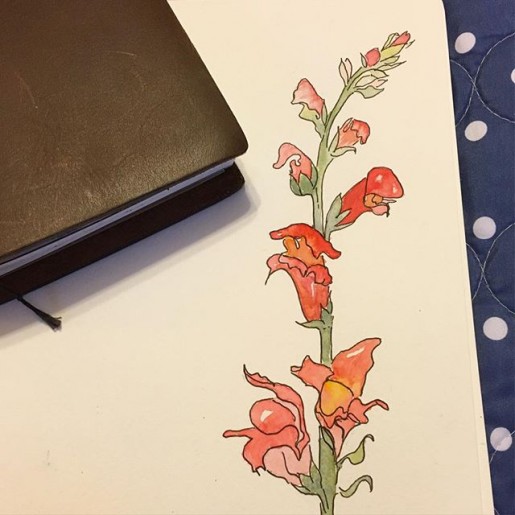

Louisa by Isabelle, grade 5
• Melted at the artwork and poems created by the three classes of fifth- and sixth-graders who welcomed me to the Greater San Diego Reading Association’s annual Authors Fair.
• Read aloud the last chapter of The Prairie Thief to a roomful of eager fifth-graders. Such a delight. I so seldom get to read the end of the book to a school group—I don’t want to give anything away! Exceedingly fun to discover the teacher had been reading the book to the class and saved the finale for my visit. 🙂
• Had a marvelous time swapping book suggestions with the kids during the Q&A after my readings. Hot tip: they are loving The Unicorn Chronicles at the moment.
• Tried out a new voice for Fox in my Storytime at Carmel Valley Public Library on Saturday. Gotta keep it fresh, you know.
• Wrote my tail off all day yesterday.
• Rejoiced with the gang as our monarch butterfly emerged from its chrysalis this morning. We missed the big entrance but not by much. Later, when it was ready to fly, we took it out to the milkweed patch in the backyard, and it rested there long enough for Rilla and me to sketch it. I had just finished adding watercolor when it soared away to the cape honeysuckle, and from there out into the blue. Bon voyage, little dear.

Yes, aphids galore
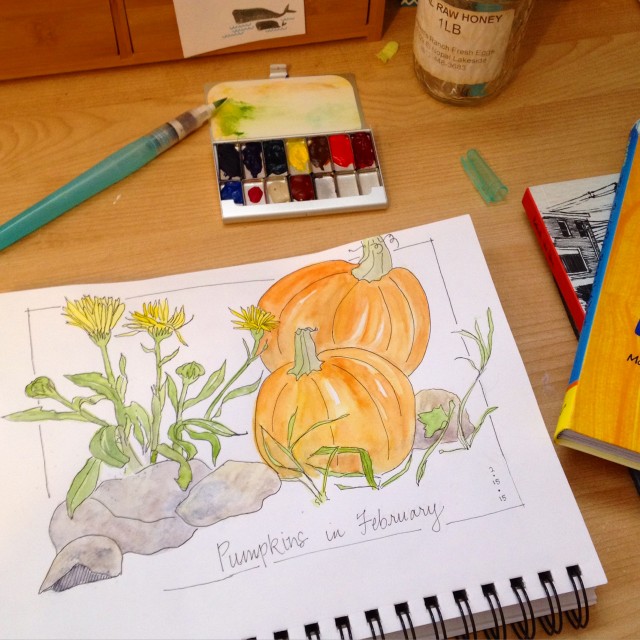
Remember those pumpkins I said might be ripe in time for Christmas? More like Valentine’s Day. We gave most of them away to a neighbor (who thanked us with pumpkin bread, so we came out ahead) but kept a couple to perpetuate the cycle. We’ll ignore these and let Nature do her thing, and maybe we’ll have some seeds sprouting earlier in the season this time around. In the meantime, I’m enjoying the jarring contrast of spring flowers and fall harvest.
Spotted two tiny caterpillars on the milkweed! Sadly, however, we also found a withered monarch chrysalis hanging on the fence with a pinprick hole in it. It looks like we’re raising caterpillars for something’s lunch. Not cool, Nature. Monarchs have enough to contend with these days.
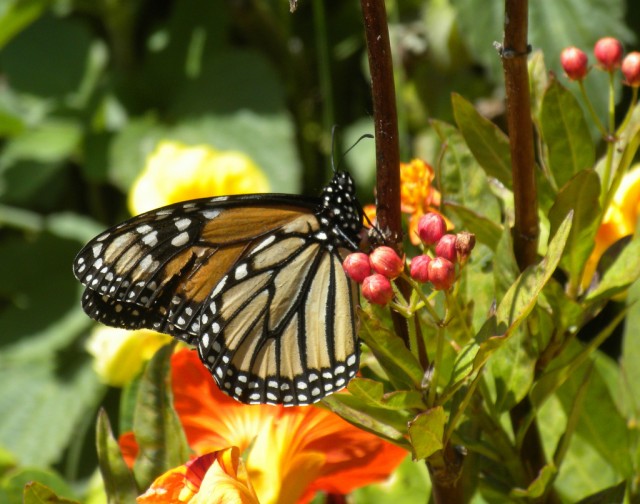
I’ve been blogging about Monarch butterflies practically from the moment this blog began. I’ve been growing milkweed, the only host plant for monarch caterpillars, in our yard for over a decade—first in Crozet, Virginia, and then here in San Diego after our move seven years ago. When you leave a comment on this blog, if you don’t happen to have a WordPress avatar set up, the default avatar is a picture of milkweed from my garden. I made a very dopey video, once, showing some of our butterfly plants, and was lucky enough to catch a Monarch in the act of laying an egg on the underside of a leaf. We’ve been a family wrapped up in bees and butterflies for a very long time.
We had a fair number of caterpillars last year, enough to eat our five plants to the ground. But this year may be different.
This year, the giant Monarch migration that takes place in the mountains of Mexico has been, well, not exactly giant.
…for the first time in memory, the monarch butterflies didn’t come, at least not on the Day of the Dead. They began to straggle in a week later than usual, in record-low numbers. Last year’s low of 60 million now seems great compared with the fewer than three million that have shown up so far this year. Some experts fear that the spectacular migration could be near collapse.
The reasons aren’t a mystery:
A big part of it is the way the United States farms. As the price of corn has soared in recent years, driven by federal subsidies for biofuels, farmers have expanded their fields. That has meant plowing every scrap of earth that can grow a corn plant, including millions of acres of land once reserved in a federal program for conservation purposes.
Another major cause is farming with Roundup, a herbicide that kills virtually all plants except crops that are genetically modified to survive it.
As a result, millions of acres of native plants, especially milkweed, an important source of nectar for many species, and vital for monarch butterfly larvae, have been wiped out. One study showed that Iowa has lost almost 60 percent of its milkweed, and another found 90 percent was gone. “The agricultural landscape has been sterilized,” said Dr. Brower.
This article touches, too, on the dire plight of the honeybee, about which I’ve had much to say on this blog over the years.
I don’t often feel helpless. But with this, I do. What can I do beyond the small acts I’ve been doing? Planting milkweed, singing the joys of bee-and-butterfly gardening, avoiding pesticides and herbicides even though that means I have a weedy garden. Keep on singing, I guess?

As I mentioned yesterday, we’ve spotted our first monarch cats of the year. From the size of this guy, you’d think we’d have cottoned to him a little sooner, eh?
And our blueberry bushes managed to produce four perfect, perfectly delicious berries. We lost most of the buds weeks ago, unfortunately—transplant shock, I’m guessing. They came home from the nursery LOADED with blossoms but most of them fell off prematurely. Ah well. Those four berries were jewels. Rose, Beanie, and I each had one—no one else here likes them, can you believe it??—and the girls insisted that I take the extra, because the bushes were my Mother’s Day present.
I’m looking at this caterpillar and thinking that another huge metamorphosis is about to occur…after two days on Google+, I have to say I think it’s a game-changer. A year from now, we’re all going to be internetting very differently, mark my words. Not just my words: the murmurings are everywhere. All my musings these past months over the best way to share links and save clippings and log read-alouds and keep in touch with loved ones and and and—well, suddenly there’s this one place where you can do all of those things, and email and chat and etc etc etc—and whether such an entity appeals to you or not, it’s going to change the landscape for all of us in one way or another.
I say this not without trepidation and cautiousness; it’s unsettling to contemplate handing one entity that much power. But a streamlined web life has tremendous appeal. I’ll proceed watchfully but enthusiastically. (And I’m not ditching Facebook…yet. Not ever, as long as my family is there.)

The mourning cloak again. My camera batteries died immediately after this shot, so I wasn’t able to get a better focused one, alas. Almost such a great shot!
See the big rip in its wing? Looks like it may have found our milkweed just in time. It seems too tuckered to go much farther.



This photo by Rose.

I don’t think I’ve written about the Monarchs since they returned to us. Only a month ago, I was fretting over their absence—we had a profusion of milkweed in bloom but not a single butterfly at that point, compared to dozens the year before. A day or two after that post, voila. We’ve had a steady stream of ‘pillars and butterflies ever since.
My friend Laurie took up Monarch gardening this year, too. She has been taking amazing photos of every stage of development. Her milkweed attracted so many egg-laying females that the caterpillars chewed it practically to the ground. Laurie found four or five of them roaming the yard in search of food, so she brought them here where we had plenty of leafy plants left. Operation Caterpillar Rescue!
We’ve only brought one cat inside this year, the female (I think female—thicker veins, yes, Laurie?) above. Jane took the photo above just minutes after this lovely creature emerged from her chrysalis.
So that’s two states in which we’ve helped reinvigorate the Monarch populations. Yesterday evening I watched my younger children chase floating milkweed seeds across the backyard, laughing, spinning, leaping, clapping. The invigoration works both ways, it seems.

(Photo from last summer.)
Related posts:
“A little egg lay on a leaf”
Monarchs in Virginia
(We’re pretty sure.)

I love those blue dots.
























